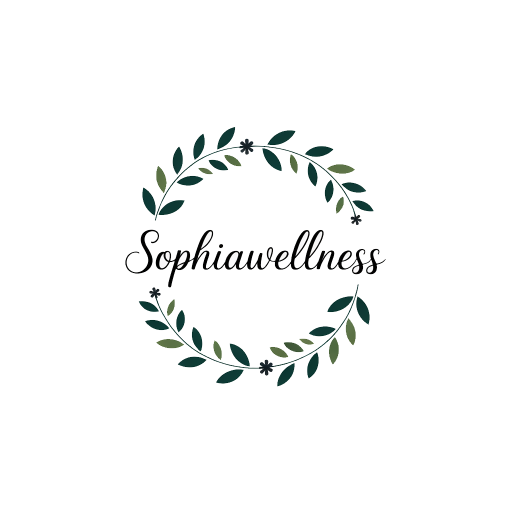This 5-Minute Breathing Exercise Will Help You Feel More Centered
This 5-minute breathing exercise helps you feel more centered by calming your mind and releasing tension. Find a quiet spot and get comfortable in a seated position. Focus on your breath, counting each inhale and exhale to enhance your awareness. As you breathe, consciously relax your body, letting go of any stress. This simple practice anchors you in the present, making it easier to return to your day with clarity. There’s more to explore about integrating these techniques into your routine.
Key Takeaways
- Find a quiet space and sit comfortably to ensure maximum focus during the 5-minute breathing exercise.
- Inhale deeply while counting to promote a steady rhythm and invite energy into your body.
- Exhale fully, striving to release tension and any distracting thoughts that arise during the session.
- Visualize your breath flow and consciously relax muscle groups, allowing for deeper calm with each exhale.
- Use this breath-centered practice to cultivate mindfulness, returning to your tasks with renewed clarity and focus afterward.
Understanding the Importance of Breathing
Breathing is more than just a physiological necessity; it’s a powerful tool for grounding and centering yourself.
When you focus on your breathing, you engage in a form of meditation that calms the mind and clarifies your intentions. Each inhale invites energy and awareness, while every exhale releases tension and distractions.
You may not realize it, but your breath has the capability to transform your emotional state, anchoring you firmly in the present moment. Integrating breathing techniques into your daily routine can further enhance your ability to manage stress and anxiety.
Mastering the art of conscious breathing can enhance your meditation practice, helping you tap into deeper states of focus and tranquility.
By valuing each breath, you foster a sense of control and peace that permeates every aspect of your life.
Embrace this essential practice to cultivate balance and clarity.
Preparing for Your 5-Minute Session
Before you start your 5-minute session, find a quiet space where you won’t be disturbed.
Set a timer to keep track of your time, so you can fully focus on your breathing.
Finally, get into a comfortable sitting position that feels right for you. Incorporating breathing techniques into your session can significantly enhance your relaxation experience.
Find a Quiet Space
Finding a quiet space is essential for maximizing the benefits of your five-minute breathing exercise. The environment you choose greatly influences your ability to focus and center yourself. Select a location free from distractions and noise, allowing your mind to settle into the moment. Here’s a quick guide to help you identify the perfect spot:
| Criteria | Ideal Environment | Additional Tips |
|---|---|---|
| Sound Level | Silent | Use noise-canceling headphones if needed |
| Comfort | Relaxed seating | Use cushions for support |
| Lighting | Soft & Natural | Avoid harsh overhead lights |
| Accessibility | Easily reached | Choose a familiar setting |
| Duration | Minimum of 5 min | Guarantee uninterrupted time |
Utilizing a serene environment enhances your experience, promoting deeper relaxation.
Set a Timer
Setting a timer is a simple yet effective way to guarantee you dedicate the full five minutes to your breathing exercise. By doing this, you’ll remove the anxiety of monitoring the clock and can immerse yourself in the practice.
Choose a timer that has a gentle sound, signaling the end of your session without jarring you. You can use a smartphone app or a kitchen timer—whatever works best for you.
Before you start, take a moment to confirm your environment is free from interruptions, allowing you to focus solely on your breath. This small preparation step can greatly enhance your experience, helping you cultivate deeper awareness and mastery during your practice.
Embrace this commitment to yourself and to staying centered.
Comfortable Sitting Position
To guarantee a productive breathing exercise, you’ll want to choose a comfortable sitting position that supports relaxation and focus.
Find a chair or cushion that allows your spine to be straight yet relaxed. Keep your feet flat on the ground or cross your legs gently for stability. Rest your hands on your thighs or in your lap, ensuring they’re at ease.
Close your eyes softly to minimize distractions and bring your awareness inward. Take a moment to notice your breath without changing it; just observe. This prepares your body and mind to engage fully in your practice.
Finding a Comfortable Position
A comfortable position is essential for effective breathing exercises. To find yours, start by sitting or lying down in a way that supports your spine. Your back should feel aligned, and your neck relaxed.
If you’re sitting, keep your feet flat on the ground or crossed comfortably. Experiment with your arm placement—lay them gently on your thighs or at your sides. Pay attention to any tension in your body, and adjust as necessary to eliminate discomfort.
You might prefer a cushion for extra support. Make sure your clothes aren’t restrictive; they should allow for easy movement. Engaging in proper positioning enhances your ability to experience the benefits of breath for improved mental clarity.
In this supportive setup, you’re more likely to engage fully and draw deeper breaths. Investing time in this position sets a strong foundation for your practice.
Focusing on Your Breath
Once you’ve settled into a comfortable position, directing your attention to your breathing becomes effortless. You can deepen your focus by visualizing your breath flowing in and out. A useful approach is to note these characteristics of your inhalation and exhalation:
| Inhalation | Exhalation | Sensations |
|---|---|---|
| Smooth | Gentle | Expanding chest |
| Deep | Relaxed | Warmth in belly |
| Revitalizing | Soothing | Cooling air |
| Energizing | Calming | Lightness in body |
Allow the rhythm of your breath to anchor you, drawing your mind away from distractions. Incorporating these techniques will help you harness the power of breath for relaxation and mental clarity. With practice, this focus will enhance your ability to remain present and centered in each moment.
Counting Your Inhalations and Exhalations
Counting your inhalations and exhalations can enhance your breathing practice by helping you maintain focus and measure your progress.
You’ll find various techniques to guarantee accuracy, allowing you to center yourself more effectively. Furthermore, incorporating a simple breathing technique into your practice can significantly enhance your overall mental calmness and tranquility. Let’s explore how these methods can benefit your overall experience.
Benefits of Counting
Focusing on your breath can greatly enhance your mindfulness practice, and incorporating a counting technique can make it even more effective. By counting your inhalations and exhalations, you gain numerous benefits that deepen your experience.
-
Increases focus: Counting directs your attention, minimizing distractions.
-
Enhances relaxation: It slows your breathing, activating your body’s relaxation response.
-
Promotes consistency: Keeping track of counts cultivates a steady breathing rhythm.
-
Builds awareness: You’ll develop a heightened sense of your breath and bodily sensations.
Utilizing this simple counting method empowers your practice, enabling you to transcend habitual thinking and immerse yourself in the present moment.
Embrace counting as a tool for mastery and transformation in your mindfulness journey.
Techniques for Accuracy
To harness the benefits of counting your breath effectively, it’s crucial to adopt techniques that guarantee accuracy in your practice.
Start by finding a comfortable position and closing your eyes to minimize distractions. Inhale deeply through your nose and count silently to four, then exhale through your mouth while counting to four again. Consistently focus on the rhythm; don’t rush.
Use a timer to maintain a steady pace for five minutes. If you lose track, gently bring your focus back to your breath rather than becoming frustrated.
To deepen your mastery, switch up your counting intervals as you progress, experimenting with longer or shorter counts. This adaptability promotes a greater sense of control and awareness in your breathing practice.
Observing Your Thoughts
How often do you find yourself swept away by your thoughts, barely noticing the narrative unfolding in your mind?
Observing your thoughts allows you to become aware of the mental patterns that often dictate your emotional state. By practicing this skill, you gain insight into your cognitive habits and propel yourself toward mastery.
Here’s how to get started:
- Pause and breathe: Take a moment to focus on your breath and create a still space.
- Identify your thoughts: Acknowledge each thought as it arises, without judgment.
- Label emotions: Recognize the feelings tied to these thoughts; this adds clarity.
- Return to the breath: Ground yourself by redirecting your focus back to the rhythm of your breathing.
This practice cultivates greater awareness and control.
Consciously Relaxing Your Body
Three simple steps can help you consciously relax your body and release tension.
First, find a comfortable position. You might sit or lie down—whatever feels right.
Next, take a deep breath in, allowing your abdomen to expand fully, then exhale slowly, envisioning the release of tightness. Repeat this breath pattern, deepening your focus with each cycle.
As you breathe, bring your awareness to specific muscle groups. Start from your head, consciously relaxing each one as you move toward your toes. Acknowledge the sensation of relaxation spreading through your body.
Finally, hold on to this sense of calm for a moment before returning to your day, recharged and centered. Your body responds to your intentions, so practice often.
Engaging in Mindful Awareness
Engaging in mindful awareness means tuning into the present moment and appreciating your thoughts and surroundings without judgment.
This practice can lead to increased clarity, reduced stress, and a deeper connection to yourself and others.
Understanding the benefits of mindfulness helps you harness its power for better emotional and mental wellness.
Understanding Mindful Awareness
While you might often find your mind wandering, embracing mindful awareness helps anchor you in the present moment. This practice involves tuning into your thoughts, feelings, and surroundings without judgment.
By cultivating this awareness, you enhance your ability to concentrate and respond to life’s challenges with clarity.
Consider these key aspects of mindful awareness:
- Attention: Focus fully on the here and now.
- Non-judgment: Accept thoughts and feelings without labeling them as good or bad.
- Curiosity: Approach your experiences with an open mind, enthusiastic to learn.
- Breath: Use your breath as an anchor, returning to it whenever distractions arise.
Benefits of Mindfulness
Cultivating mindful awareness offers a range of benefits that enhance your overall well-being. By engaging in mindfulness, you sharpen your focus and improve your concentration, allowing you to tackle tasks with greater efficiency.
This practice also reduces stress and anxiety, fostering a sense of calm that permeates your daily life. You’ll find it easier to manage your emotions, leading to healthier relationships and improved communication skills.
Additionally, mindfulness promotes self-awareness, enabling you to recognize negative thought patterns and replace them with constructive ones. As you incorporate this discipline into your routine, you’ll discover enhanced creativity and problem-solving abilities.
Ultimately, embracing mindful awareness equips you with the tools to navigate life’s challenges more effectively, transforming your experience into one of fulfillment and peace.
Returning to Your Day
As you take a moment to center yourself, you’ll find it easier to return to your day with renewed focus and calm.
This simple breathing exercise can help you shift smoothly back into your tasks and obligations. Embrace the clarity that follows your mindful practice, and watch your productivity soar.
Here are a few strategies to enhance your return:
- Set Intentions: Define what you want to accomplish after your exercise.
- Prioritize Tasks: Tackle the most critical items first to maintain momentum.
- Limit Distractions: Create a conducive workspace to enhance concentration.
- Practice Gratitude: Acknowledge what went well and appreciate the present moment.
With these tools in hand, you’re ready to approach your day with intention and confidence.
Incorporating Breathing Exercises Into Daily Life
Now that you’ve centered yourself and gained clarity, it’s the perfect time to integrate breathing exercises into your daily routine.
Start by setting aside a few minutes each day, perhaps in the morning or during breaks, to practice. Consistency is key—try pairing your breathing exercises with existing habits, like your morning coffee or meditation, to guarantee you stick with it.
Focus on deep, slow breaths, inhaling through your nose, and exhaling through your mouth. Gradually increase the duration as you become more comfortable.
You can also use reminders, like sticky notes or alarms, to prompt you throughout the day. Mastering this technique won’t only enhance your focus but also help you navigate daily challenges with greater ease.
Frequently Asked Questions
How Often Should I Practice This Breathing Exercise?
You should practice this breathing exercise daily for ideal results. Consistency builds mastery, so integrating it into your routine enhances focus and tranquility. Find the right moments, and you’ll notice significant improvements in your well-being.
Can Children Also Benefit From This Exercise?
Absolutely, children can benefit from this exercise. It helps them manage emotions, reduce anxiety, and improve focus. When you guide them through it regularly, they’ll develop essential skills for emotional regulation and mindfulness.
What Should I Do if I Feel Anxious During the Exercise?
If you feel anxious during the exercise, acknowledge those feelings. Shift your focus to your breath, perhaps counting your inhales and exhales. Remember, it’s okay to pause, refocus, and return when you’re ready.
Are There Any Contraindications for This Breathing Technique?
If you’re considering this breathing technique, check for any respiratory issues, heart conditions, or pregnancy status. It’s best to consult a professional before starting, ensuring your practice aligns with your health and personal needs.
What if I Can’t Find a Quiet Space to Practice?
If you can’t find a quiet space, try practicing in a discreet area. Focus on your breath, tuning out distractions. Even brief moments in busier environments can help regain your center and enhance your mindfulness.





